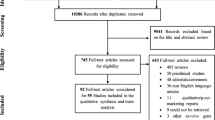Abstract
More than 10 years ago, we developed an efficient protocol for serum-free retroviral transduction of human hematopoietic stem cells derived from mobilized peripheral blood. After upscaling of the methodology, serum-free retroviral gibbon-ape leukemia virus (GALV) pseudotype PG13/LN vector supernatant produced under strict good manufacturing practice (GMP) conditions was used in the first clinical gene-marking trial in Germany. In this study, we analyzed the titer and transduction efficiency of this serum-free clinical-grade retroviral supernatant 10 years after production to evaluate the long-term stability. Long-term storage and transport on dry ice resulted in modestly decreased titers and levels of transduction efficiency in CD34+ cells ranging from 38.4 to 49.1%. We conclude that the stability of retroviral vectors in serum-free medium allows extended storage and distribution of approved clinical-grade retroviral vector stocks to distant sites in multicenter clinical trials.
This is a preview of subscription content, access via your institution
Access options
Subscribe to this journal
Receive 12 print issues and online access
$259.00 per year
only $21.58 per issue
Buy this article
- Purchase on Springer Link
- Instant access to full article PDF
Prices may be subject to local taxes which are calculated during checkout

Similar content being viewed by others
References
Glimm H, Flugge K, Mobest D, Hofmann VM, Postmus J, Henschler R et al. Efficient serum-free retroviral gene transfer into primitive human hematopoietic progenitor cells by a defined, high-titer, nonconcentrated vector-containing medium. Hum Gene Ther 1998; 9: 771–778.
Glimm H, Schmidt M, Fischer M, Schwarzwaelder K, Wissler M, Klingenberg S et al. Efficient marking of human cells with rapid but transient repopulating activity in autografted recipients. Blood 2005; 106: 893–898.
Lebkowski JS, Schain L, Hall M, Wysocki M, Dadey B, Biddle W . Rapid isolation and serum-free expansion of human CD34+ cells. Blood Cells 1994; 20: 404–410.
Springett GM, Moen RC, Anderson S, Blaese RM, Anderson WF . Infection efficiency of T lymphocytes with amphotropic retroviral vectors is cell cycle dependent. J Virol 1989; 63: 3865–3869.
Miller DG, Adam MA, Miller AD . Gene transfer by retrovirus vectors occurs only in cells that are actively replicating at the time of infection. Mol Cell Biol 1990; 10: 4239–4242.
Roe T, Reynolds TC, Yu G, Brown PO . Integration of murine leukemia virus DNA depends on mitosis. EMBO J 1993; 12: 2099–2108.
Takeuchi Y, Cosset FL, Lachmann PJ, Okada H, Weiss RA, Collins MK . Type C retrovirus inactivation by human complement is determined by both the viral genome and the producer cell. J Virol 1994; 68: 8001–8007.
DePolo NJ, Harkleroad CE, Bodner M, Watt AT, Anderson CG, Greengard JS et al. The resistance of retroviral vectors produced from human cells to serum inactivation in vivo and in vitro is primate species dependent. J Virol 1999; 73: 6708–6714.
Cosset FL, Takeuchi Y, Battini JL, Weiss RA, Collins MK . High-titer packaging cells producing recombinant retroviruses resistant to human serum. J Virol 1995; 69: 7430–7436.
Pensiero MN, Wysocki CA, Nader K, Kikuchi GE . Development of amphotropic murine retrovirus vectors resistant to inactivation by human serum. Hum Gene Ther 1996; 7: 1095–1101.
Beer C, Meyer A, Muller K, Wirth M . The temperature stability of mouse retroviruses depends on the cholesterol levels of viral lipid shell and cellular plasma membrane. Virology 2003; 308: 137–146.
Cruz PE, Silva AC, Roldao A, Carmo M, Carrondo MJ, Alves PM . Screening of novel excipients for improving the stability of retroviral and adenoviral vectors. Biotechnol Prog 2006; 22: 568–576.
Wikstrom K, Blomberg P, Islam KB . Clinical grade vector production: analysis of yield, stability, and storage of gmp-produced retroviral vectors for gene therapy. Biotechnol Prog 2004; 20: 1198–1203.
Lamers CH, van Elzakker P, Luider BA, van Steenbergen SC, Sleijfer S, Debets R et al. Retroviral vectors for clinical immunogene therapy are stable for up to 9 years. Cancer Gene Ther 2008; 15: 268–274.
Miller AD, Garcia JV, von Suhr N, Lynch CM, Wilson C, Eiden MV . Construction and properties of retrovirus packaging cells based on gibbon ape leukemia virus. J Virol 1991; 65: 2220–2224.
Higashikawa F, Chang L . Kinetic analyses of stability of simple and complex retroviral vectors. Virology 2001; 280: 124–131.
Nyberg-Hoffman C, Aguilar-Cordova E . Instability of adenoviral vectors during transport and its implication for clinical studies. Nat Med 1999; 5: 955–957.
Acknowledgements
We would like to thank Dr Roland Mertelsmann, University Hospital, Freiburg for supporting this study, and CellGenix GmbH, Freiburg for the long-term storage of the GMP-produced serum-free γ-retroviral supernatant. This work was supported by the Bundesministerium für Bildung und Forschung, Grant 01KV9907, by the Deutsche Forschungsgemeinschaft DFG, Grants KA 976/5-1, KA 976/5-2, Ka976/5-3 and Ka976/5-4, and by the Deutsche Krebshilfe Grants 10-1860-GI I and 107217.
Author information
Authors and Affiliations
Corresponding author
Ethics declarations
Competing interests
The authors declare no conflict of interest.
Rights and permissions
About this article
Cite this article
Herbst, F., Ball, C., Zavidij, O. et al. 10-Year stability of clinical-grade serum-free γ-retroviral vector-containing medium. Gene Ther 18, 210–212 (2011). https://doi.org/10.1038/gt.2010.126
Received:
Revised:
Accepted:
Published:
Issue Date:
DOI: https://doi.org/10.1038/gt.2010.126



